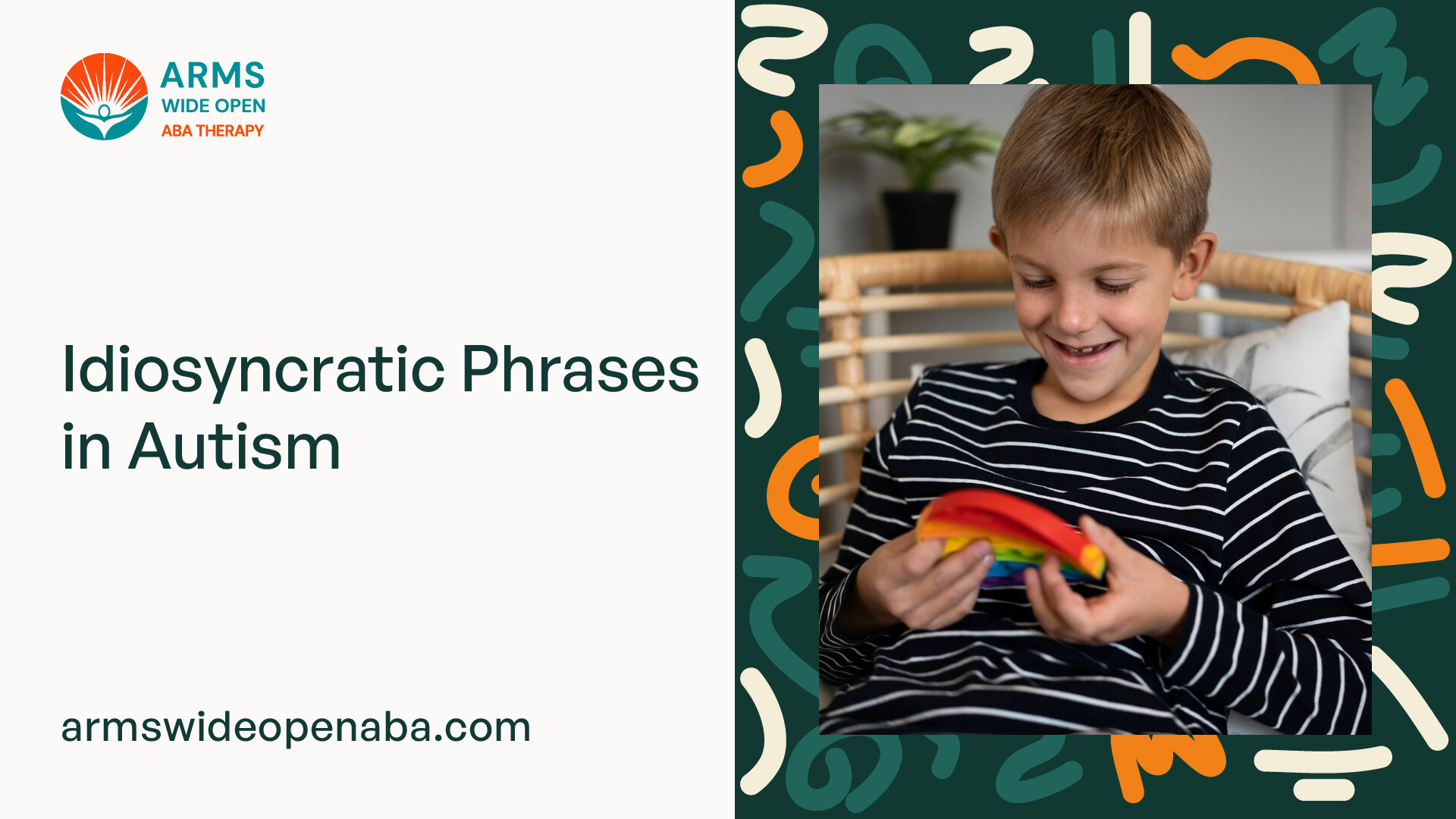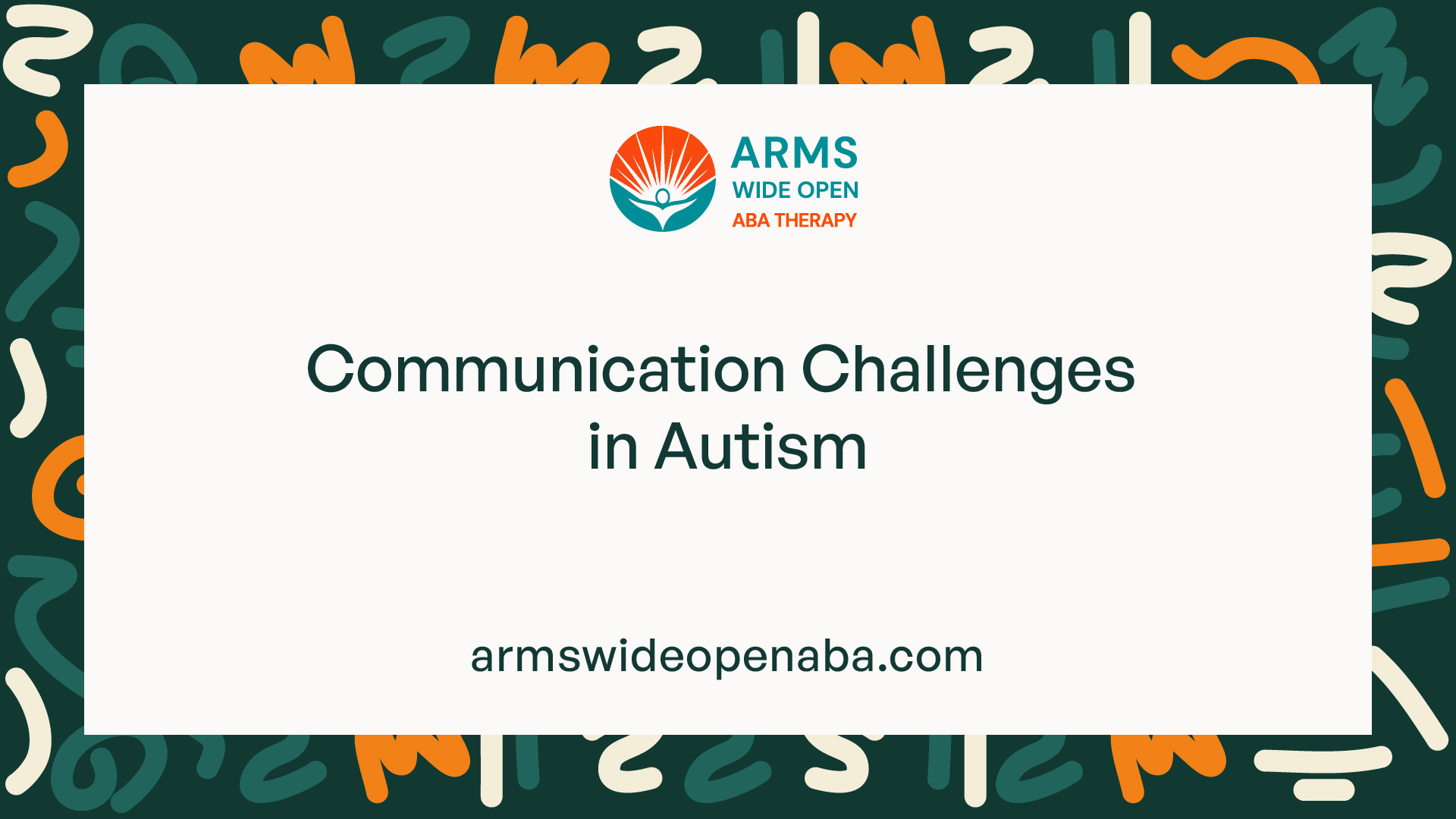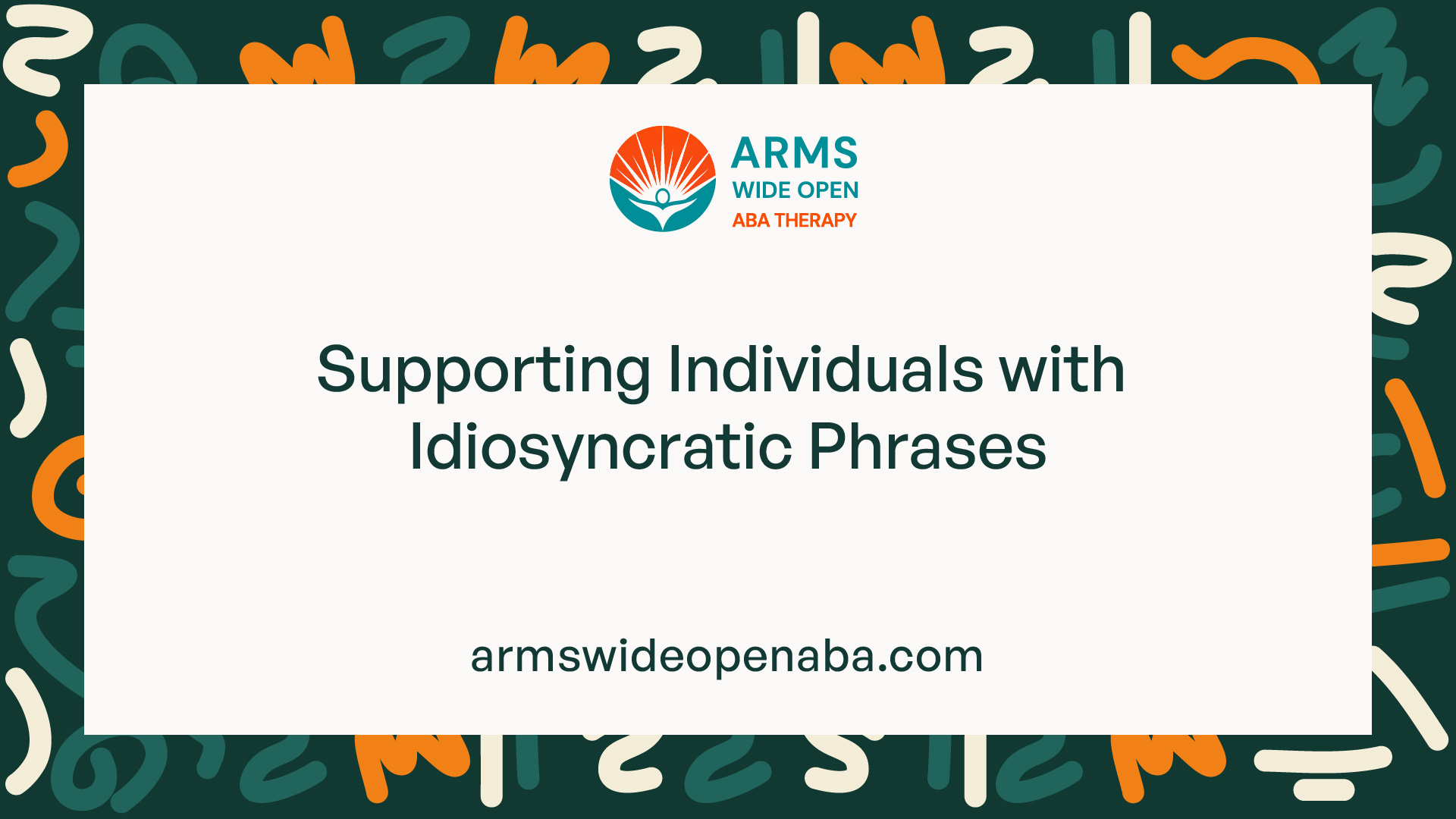Idiosyncratic Phrases in Autism
Unraveling idiosyncratic phrases in autism: Decode the linguistic quirks and support communication with understanding


The Linguistic Landscape of Autism
In the realm of autism, understanding the linguistic quirks and idiosyncratic phrases that individuals with autism may employ is crucial for effective communication. This section will delve into the importance of unraveling these unique linguistic patterns and gaining a deeper understanding of their significance.
Understanding Idiosyncratic Phrases
Idiosyncratic phrases are peculiar or unconventional language expressions that individuals with autism may use. These phrases can take various forms, such as echolalia, neologisms, or idiosyncratic idioms. Equipped with a deeper understanding of these linguistic quirks, one can navigate communication more effectively and foster meaningful connections with individuals on the autism spectrum.
Importance of Unraveling Linguistic Quirks
Unraveling the idiosyncratic phrases employed by individuals with autism is of paramount importance for several reasons. Firstly, it helps bridge the communication gap between individuals with autism and those around them, enabling smoother interactions and reducing misunderstandings.
By deciphering the meaning behind these phrases, caregivers, family members, and professionals can gain insights into the thoughts, emotions, and needs of individuals with autism. This, in turn, promotes empathy and understanding, fostering a supportive environment that nurtures their unique communication styles.
Furthermore, unraveling linguistic quirks aids in the development of personalized strategies and interventions for individuals with autism. It allows therapists and educators to tailor their approaches to meet the specific linguistic needs of each individual, promoting their overall linguistic and social development.
Understanding and embracing the idiosyncratic phrases used in the autistic community contributes to the broader goal of promoting inclusivity and acceptance. It recognizes and celebrates the unique perspectives and experiences of individuals with autism, fostering a more inclusive society that appreciates neurodiversity.
By delving into the linguistic landscape of autism and unraveling idiosyncratic phrases, we can better support and connect with individuals on the autism spectrum, ultimately enriching their lives and our own understanding of the human experience.
Common Idiosyncratic Phrases
Individuals with autism often exhibit unique linguistic characteristics that contribute to their idiosyncratic phrases. These phrases can provide valuable insights into their thought processes and perspectives. In this section, we will explore three common types of idiosyncratic phrases: echolalia, neologisms, and idiosyncratic idioms.
Echolalia: Repeating Words or Phrases
Echolalia refers to the repetition of words or phrases that an individual with autism hears from others or from media. This repetition can occur immediately after hearing the words or at a later time. Echolalia can be categorized into two types: immediate echolalia, where the individual repeats words or phrases immediately after hearing them, and delayed echolalia, where the repetition occurs after a certain period of time.

Echolalia serves different purposes for individuals with autism. It can be a way to communicate, practice language skills, or express familiarity with a particular phrase. It is important to note that echolalia may not always indicate comprehension of the meaning behind the words or phrases being repeated. Instead, it is often used as a tool for communication or self-soothing.
Neologisms: Creating New Words
Neologisms are newly created words or phrases that may have personal meaning to individuals with autism. These words can be a combination of existing words or completely unique to the individual. Neologisms can serve as a form of self-expression and can help individuals communicate their thoughts and feelings in a way that makes sense to them.

Neologisms may have different meanings for individuals with autism compared to their conventional definitions. These words can be used as a form of self-identification, to describe sensory experiences, or to express emotions that are difficult to convey using conventional language. It is important to approach neologisms with openness and understanding, as they can provide valuable insights into the individual's unique perspective.
Idiosyncratic Idioms: Unique Interpretations
Idiosyncratic idioms refer to the unique interpretations individuals with autism may have of common idiomatic expressions. Rather than understanding idioms in their conventional sense, individuals with autism may interpret them literally or create their own meaning based on their understanding of the words used.

The literal interpretation of idioms can lead to misunderstandings in social interactions, as the intended meaning may be misconstrued. It is important to provide clear explanations and offer alternative ways to understand idiomatic expressions to support effective communication.
Understanding and decoding idiosyncratic phrases is crucial for effective communication with individuals with autism. By recognizing and appreciating the unique linguistic characteristics they display, we can foster better understanding, promote inclusivity, and create an environment that embraces neurodiversity.

Communication Challenges in Autism
Individuals with autism often face unique communication challenges that can affect their linguistic abilities. Understanding these challenges is essential for promoting effective communication and fostering understanding. Some of the common communication challenges in autism include literal interpretations, social pragmatic difficulties, and sensory sensitivities impacting language.
Literal Interpretations
A prominent feature of communication in autism is the tendency towards literal interpretations. Individuals with autism may struggle with understanding and using figurative language, such as metaphors, idioms, and sarcasm. They often interpret language in a concrete and straightforward manner, which can lead to misunderstandings in social interactions.

Social Pragmatic Difficulties
Autism is characterized by social pragmatic difficulties, which encompass the use of language in social contexts. Individuals with autism may struggle with turn-taking, initiating and maintaining conversations, understanding nonverbal cues, and appropriately using eye contact and gestures. These difficulties can impact their ability to engage in meaningful social interactions and may result in communication breakdowns.

Sensory Sensitivities Impacting Language
Sensory sensitivities are commonly associated with autism and can also impact language and communication. Individuals with autism may be hypersensitive or hyposensitive to certain sensory stimuli, such as sound, touch, taste, or smell. These sensory sensitivities can affect their ability to process and respond to language, leading to difficulties in understanding and expressing themselves effectively.

Understanding these communication challenges is crucial for promoting effective communication strategies and supporting individuals with autism in their linguistic development. By recognizing and addressing these challenges, we can create a more inclusive and supportive environment that embraces the unique communication styles and needs of individuals on the autism spectrum.
Strategies for Decoding Idiosyncratic Phrases
Understanding and deciphering idiosyncratic phrases is essential when communicating with individuals on the autism spectrum. These strategies can help bridge the communication gap and facilitate meaningful interactions.
Contextual Cues and Nonverbal Communication
Contextual cues play a significant role in decoding idiosyncratic phrases. Paying attention to the situation, environment, and body language can provide valuable clues to the intended meaning behind the words or phrases used. Nonverbal communication, such as facial expressions and gestures, can provide additional context and help interpret the message more accurately.

Building a Personalized Communication Dictionary
Creating a personalized communication dictionary can be immensely helpful when decoding idiosyncratic phrases. This dictionary can include a list of words or phrases commonly used by the individual with autism, along with their intended meanings. It is important to involve the individual in building this dictionary to ensure accuracy and to foster a sense of ownership over their own communication.

Patience and Understanding in Communication
Patience and understanding are crucial when communicating with individuals who use idiosyncratic phrases. It is essential to create a safe and supportive environment that allows for open and non-judgmental communication. Taking the time to listen actively, asking clarifying questions, and being patient when waiting for responses can help foster effective communication and build trust.

By employing these strategies, individuals on the autism spectrum can feel heard and understood, while also enhancing the overall communication experience. It is important to remember that every individual with autism is unique, and what works for one person may not work for another. Flexibility and adaptability are key in tailoring these strategies to meet the specific needs of each individual.

Supporting Individuals with Idiosyncratic Phrases
When interacting with individuals who use idiosyncratic phrases in the context of autism, it is important to provide support and understanding. Here are some strategies to help support and communicate effectively with these individuals.
Encouraging Expression and Creativity
One of the ways to support individuals with idiosyncratic phrases is to encourage their expression and creativity. Rather than discouraging or trying to eliminate their unique phrases, create an environment that values and accepts their communication style. Encourage them to express themselves freely, as this can help foster their self-confidence and overall well-being.
Providing Clear and Concrete Explanations
To facilitate effective communication, it is crucial to provide clear and concrete explanations. Individuals with autism may struggle with abstract or ambiguous language, so using simple and concise language can enhance their understanding. Breaking down complex concepts into smaller, more manageable parts can help them grasp the meaning behind phrases or idioms they may find challenging.
Seeking Professional Support and Guidance
In some cases, seeking professional support and guidance can be beneficial for both individuals with autism and their families or caregivers. Speech-language therapists and autism specialists can provide valuable strategies and techniques tailored to the individual's needs. These professionals can help develop personalized communication plans, offer guidance on deciphering idiosyncratic phrases, and provide ongoing support to enhance communication skills.
Table: Professional Support Options
Professional Support Options
Speech-Language Therapist
Autism Specialist
Behavior Analyst
By seeking professional support, individuals with idiosyncratic phrases can receive the targeted assistance they need to navigate the linguistic challenges they may encounter.
Supporting individuals with idiosyncratic phrases requires patience, understanding, and a willingness to adapt communication strategies. By encouraging their expression and creativity, providing clear explanations, and seeking professional support when needed, we can create an inclusive and supportive environment that allows individuals with autism to thrive.
Embracing Neurodiversity
In the pursuit of fostering inclusivity and understanding, it is essential to embrace the concept of neurodiversity when it comes to individuals with autism. Neurodiversity recognizes and celebrates the unique perspectives and abilities of individuals with diverse neurological conditions, including autism. By embracing neurodiversity, we can promote inclusivity, acceptance, and support for individuals with idiosyncratic phrases.
Celebrating Unique Perspectives
One of the fundamental aspects of embracing neurodiversity is celebrating the unique perspectives that individuals with autism bring to the table. Their idiosyncratic phrases and linguistic quirks offer a different lens through which to view the world. By recognizing and appreciating these unique perspectives, we can gain valuable insights and broaden our understanding of human communication and expression.
Promoting Inclusivity and Acceptance
Promoting inclusivity and acceptance is a key aspect of embracing neurodiversity. It involves creating an environment where individuals with idiosyncratic phrases feel valued and accepted for who they are. This can be achieved by fostering a culture of respect, empathy, and understanding. It is important to create spaces where individuals with autism feel safe to express themselves without judgment or ridicule.
Advocating for Understanding and Support
Advocacy plays a vital role in embracing neurodiversity. By advocating for understanding and support, we can raise awareness about the challenges faced by individuals with idiosyncratic phrases and help create a more inclusive society. This involves educating others about the linguistic quirks associated with autism and promoting strategies for effective communication. It also entails advocating for resources, services, and policies that support individuals with autism in their linguistic journey.
By embracing neurodiversity, celebrating unique perspectives, promoting inclusivity and acceptance, and advocating for understanding and support, we can create a society that values and embraces the diversity of human communication. This approach fosters an environment where individuals with idiosyncratic phrases can thrive and contribute their unique insights and perspectives to the world around us.
Sources
https://www.autismparentingmagazine.com/idiosyncratic-speech/
https://www.childrensdevelopmentalservices.com/blog/types-of-autism-speech-patterns
https://www.abtaba.com/blog/idiosyncratic-phrases
Similar articles
We’re here to help you

Our team is here to assist you in this process. Contact us for any assistance.
it’s easy to apply
We Accept Most Insurances
Our in-network insurance partnerships make ABA therapy more accessible to families throughout our service areas.







Our Insurance Process
We'll request your insurance details to help us verify your plan's coverage for ABA therapy. Once we've received this information, we'll walk you through your benefits, including copayments, deductibles and out-of-pocket maximums, so you know what to expect in advance.
Our team will then handle the preauthorization and all the necessary paperwork.
.svg)





















.jpeg)


































.jpeg)




.jpeg)







.jpeg)











.jpeg)
















